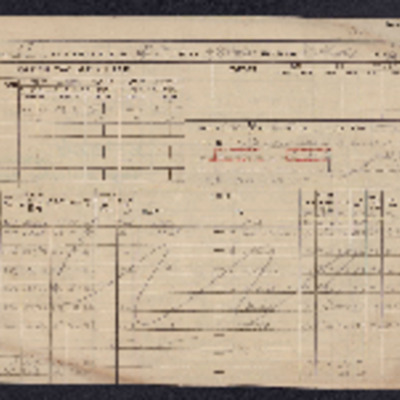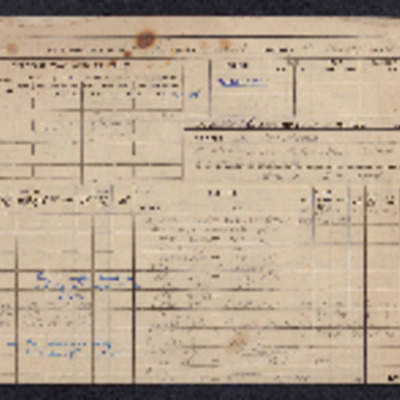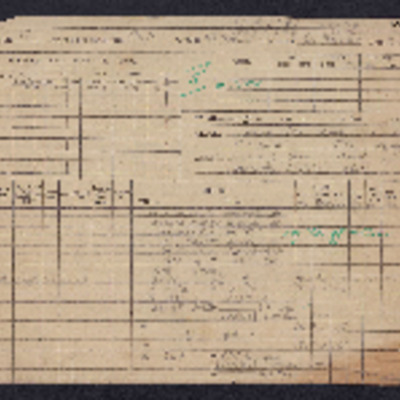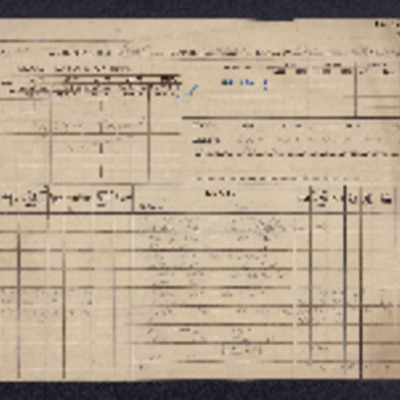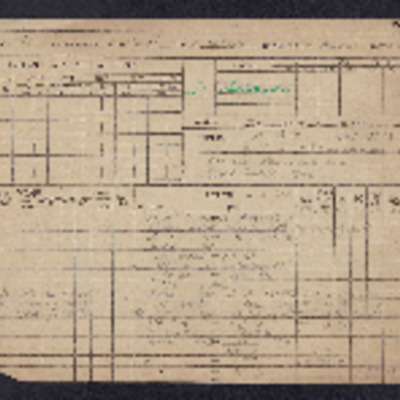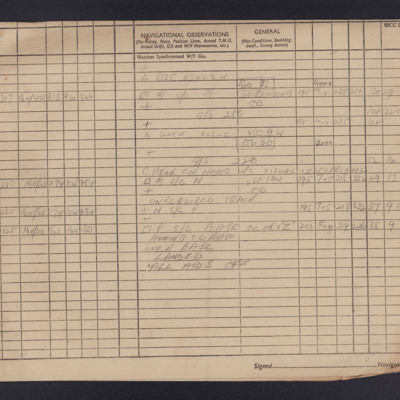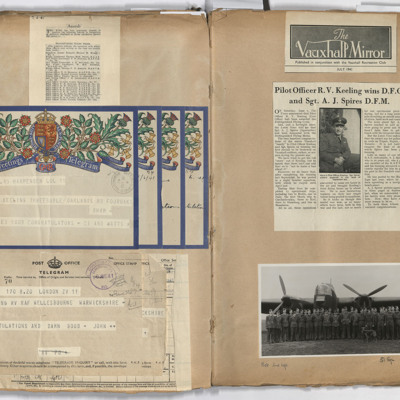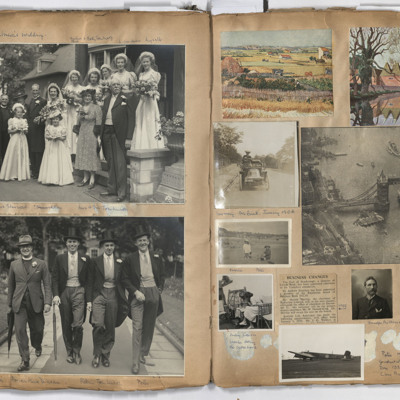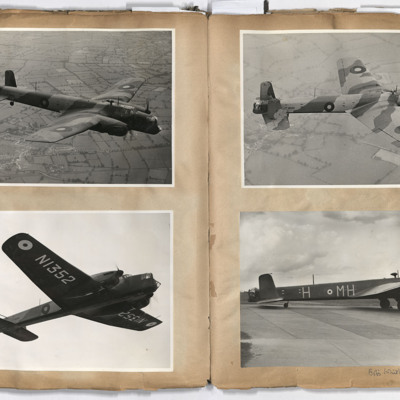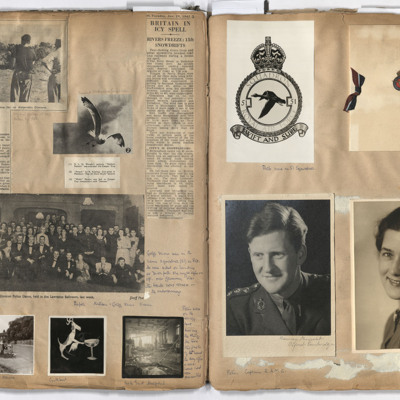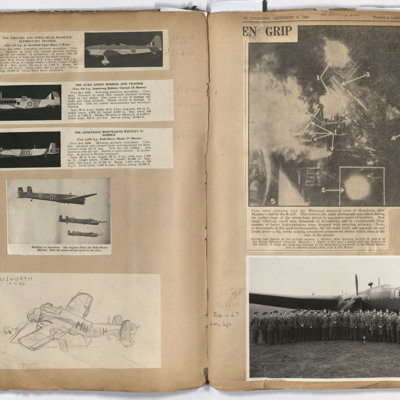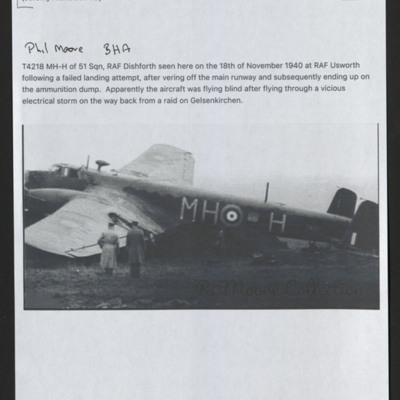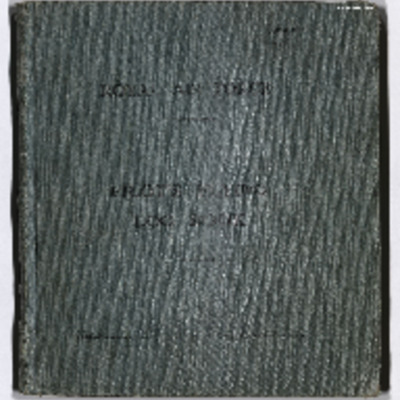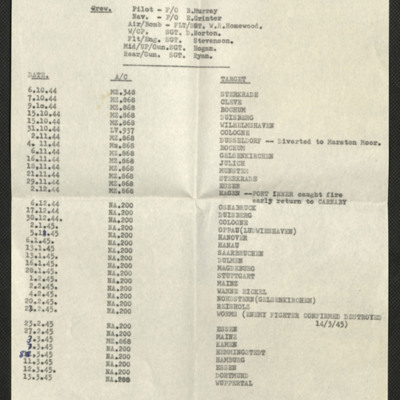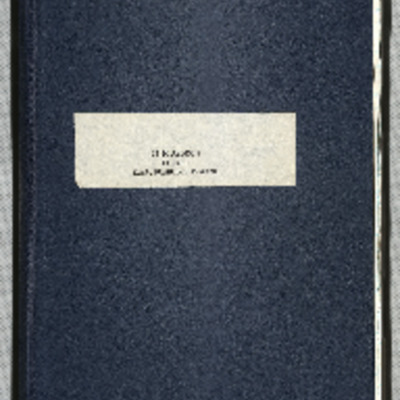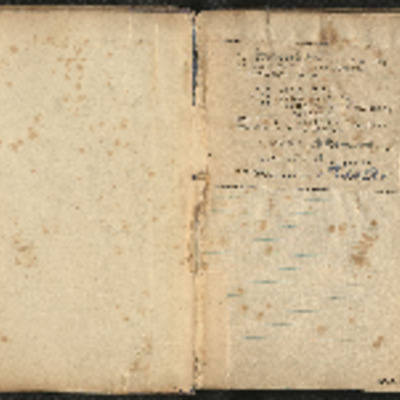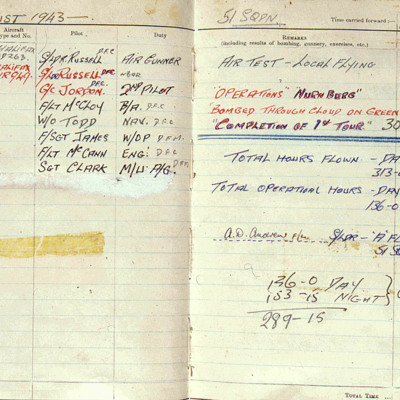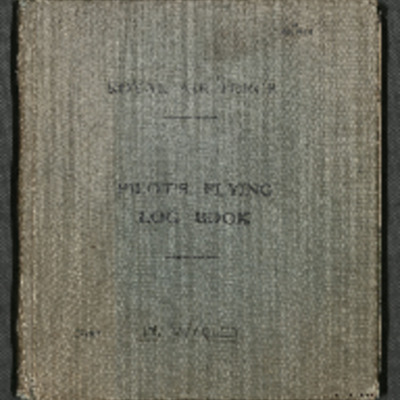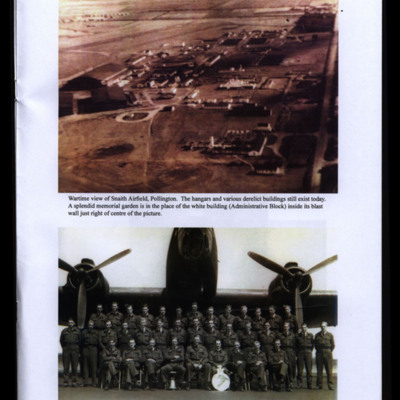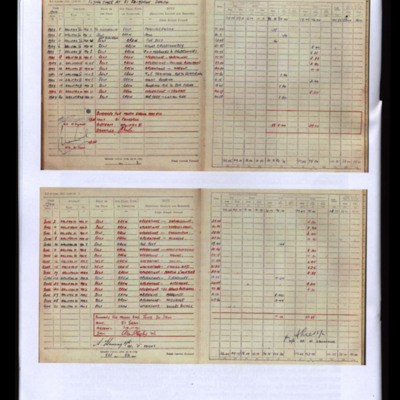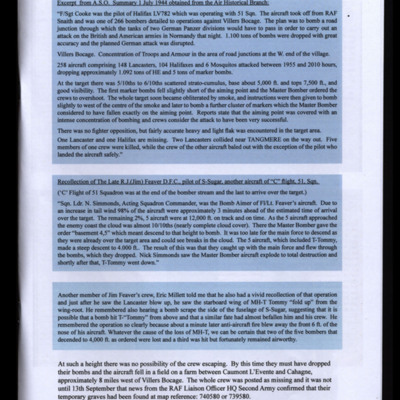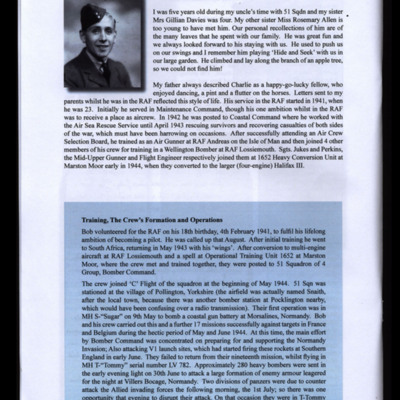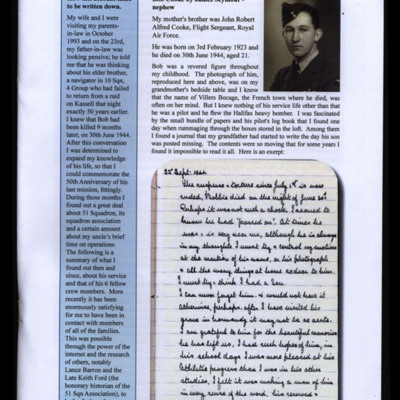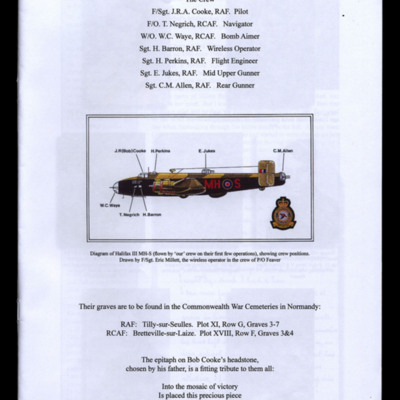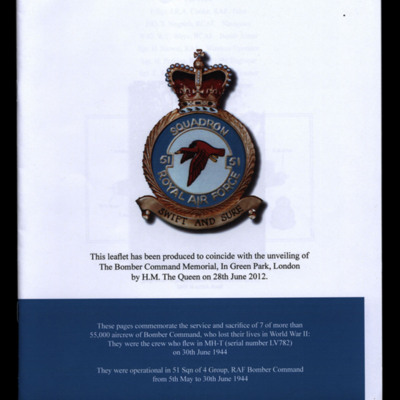Browse Items (95 total)
- Tags: 51 Squadron
Sortie navigation log
Tags: 51 Squadron; aircrew; navigator
Sortie navigation log - Wangerooge
Tags: 51 Squadron; aircrew; bombing; navigator
Sortie navigation log - Witten
Tags: 51 Squadron; aircrew; bombing; navigator; Window
Sortie navigation log - Heligoland
Sortie navigation log - Sterkrade
Tags: 51 Squadron; aircrew; bombing; navigator
Sortie navigation log
Tags: 51 Squadron; aircrew; bombing; navigator
Pilot wins D.F.C
Middle and bottom, congratulations to Bob on his award.
Right page; top, title of the Vauxhall Mirror.
Middle, report of Bob's operational career…
Wedding
top, a group comprising bride and groom, seven bridesmaids and two couples, annotated 'Kay Tomlinson's wedding'.
Bottom, four men walking abreast, three wearing top hat and tails and one a vicar.
Right page:
Top left, a copy of…
Tags: 51 Squadron; love and romance; Whitley
Whitleys
Bottom left, a view of Whitley NI352 in flight from below.
Bottom right, Whitley H MH on a runway with chocks under the front wheels, annotated 'Bob's Whitley MH H'.
Tags: 51 Squadron; aerial photograph; Whitley
Swift and Sure
Bob's aircraft
Whitley aircraft, B-DY, C-DY and E-DY, flying in formation; bottom, crashed Whitley MH-H, annotated 'Usworth 17 11…
Bob Keeling
Tags: 51 Squadron; crash; killed in action; RAF Dishforth; RAF Usworth; Whitley
Robert Victor Keeling's pilot's flying log book. One
Tags: 10 OTU; 21 OTU; 22 OTU; 51 Squadron; 7 Squadron; Advanced Flying Unit; aircrew; Anson; Battle; Blenheim; Flying Training School; Hampden; Hudson; Hurricane; Lancaster; Magister; pilot; RAF Abingdon; RAF Burnaston; RAF Cranage; RAF Dishforth; RAF Farnborough; RAF Hullavington; RAF Kemble; RAF Moreton in the Marsh; RAF Oakington; RAF Wellesbourne Mountford; Spitfire; Stirling; training; Wellington; Whitley
William Homewood's Operations in 51 Squadron
51 Squadron, 4 Group, RAF Bomber Command
Tags: 4 Group; 5 Group; 51 Squadron; 578 Squadron; 6 Group; 8 Group; air gunner; aircrew; anti-aircraft fire; bomb aimer; bombing; Distinguished Flying Cross; Distinguished Flying Medal; flight engineer; Gee; gremlin; ground crew; ground personnel; Halifax; Halifax Mk 3; Lancaster; Master Bomber; mess; mid-air collision; mine laying; Mosquito; navigator; Oboe; Oxford; Pathfinders; pilot; RAF Burn; RAF Carnaby; RAF Elvington; RAF Kirmington; RAF Leconfield; RAF Lissett; RAF Marston Moor; RAF Odiham; RAF Snaith; RAF Tangmere; Red Cross; Spitfire; Stirling; target indicator; Typhoon; Wellington; Whitley; wireless operator; Women’s Auxiliary Air Force
William Homewood's Royal Air Force Navigator’s, Air Bomber’s and Air Gunner’s Flying Log Book
Excerpt from Robert George Sharland’s Log book
Harold Wigley's RAF Pilot's Log Book
The first flight is recorded at No 7 EFTS , Desford flying in the Tiger Moth, he remained there until 28 September when he moved to No 12 SFTS flying in the Anson. In January 1941 Harold…
RAF Snaith and 51 Squadron Group
#1 is an oblique aerial photograph of Snaith taken during the war.
#2 is a group of men arranged in three rows in front of a Halifax. Bob's position is indicated in the caption.
Tags: 51 Squadron; aerial photograph; aircrew; Halifax; RAF Snaith
Excerpt of Bob Cooke's Log Book
Events at Villers Bocage
Tags: 51 Squadron; aircrew; anti-aircraft fire; bale out; bomb aimer; bomb struck; bombing; Halifax; killed in action; Lancaster; Master Bomber; mid-air collision; missing in action; Mosquito; Normandy campaign (6 June – 21 August 1944); pilot; RAF Snaith; RAF Tangmere; tactical support for Normandy troops
Charles Martin Allen by Mrs Anne Phillips
Tags: 1652 HCU; 4 Group; 51 Squadron; air gunner; aircrew; bombing; flight engineer; Halifax; Halifax Mk 3; Heavy Conversion Unit; Normandy campaign (6 June – 21 August 1944); RAF Andreas; RAF Lossiemouth; RAF Marston Moor; RAF Pocklington; RAF Snaith; tactical support for Normandy troops; training; V-1; V-weapon; Wellington
Bob Cooke by James Seymour
Tags: 10 Squadron; 4 Group; 51 Squadron; Halifax; killed in action
Bob Cooke and Crew
Flight Sergeant JR 'Bob' Cooke
Tags: 4 Group; 51 Squadron; killed in action; memorial

